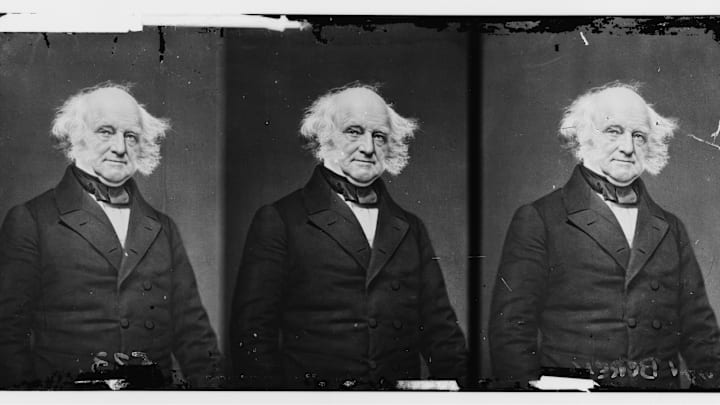Despite his administration’s successful push in outlawing bigamy and legalizing divorce, President Martin Van Buren (whose nickname was “Little Magician”) is hardly remembered for his policies. But you wanna know the coolest thing about the pair of furry muttonchops that ran the nation from 1837 to 1841? The man had one awesome toilet.
From Outhouse to In-House
During his time as commander-in-chief, Van Buren purchased a country home, which he named Lindenwald, in his hometown of Kinderhook, New York. His sons encouraged him to finish it out as a luxury spot where he could fish and go horseback riding after his term in Washington. (The house would also become a social hub for political operatives from the state capital, and a pit stop on the way to and from New York City.)
When he lost his 1840 reelection bid in a landslide to war hero William Henry Harrison—Van Buren picked up only six states in the electoral college, and not even his home state, New York—the lame duck could then turn his attention to the Lindenwald estate, which was eventually expanded into 36 rooms including a wine cellar, six family bedrooms, one formal guest room, servants’ quarters and one toilet, which you can see in the video below around the 4:50 mark.
As you might have guessed, this wasn’t just any old toilet. Restored to what is believed to be its original appearance, Van Buren’s throne is tucked away on the first floor in a closet-size room, part of a larger bathroom that accommodates the president’s original six-foot long bathtub. The toilet bowl itself is made from fine china, set inside a giant frame made of wood. A 100-gallon water tank, connected to a pump in the basement kitchen, is installed above that frame. (It’s worth noting that the servants quarters had their own indoor outhouse, and two gate houses on the property probably had outhouses.)
A killer innovation for its time, Van Buren introduced the whole town to the concept of the indoor toilet (most were accustomed to bearing the cold in an outhouse) and, according to Dawn Olson of the National Park Service, to the “novel idea to have running water and indoor plumbing in the 1850s.”
“Kitchens were generally separate from the house, but times were beginning to change,” Olson says. “There were other fairly wealthy people in the area. As a rule indoor plumbing was very rare unless you were in an urban area, New York City or Philadelphia. We hesitate to say {Lindenwald’s} was the first indoor plumbing, because there’s no proof of that.”
Estate Living

The preferred annex for the Albany elite, Van Buren’s residence would often host dinner and cocktail parties on Lindenwald’s master’s tab. In addition to the aforementioned wine cellar, the property maintained two fish ponds, a pear orchard, and an apple orchard. (Olson says “Most of those were picked to turn into something else.”) Its staff consistently harvested potatoes and kept sheep, cows, and chickens on their working farm. The mansion even had a vegetable garden replete with lettuce, carrots, onions, and cabbage. Lots of cabbage.
But none of this was a bother. Because, despite those four long years at the White House, Van Buren committed himself to two more presidential campaigns, both managed (and failed) at his estate. So political and social hobnobbing became an integral part of Lindenwald in helping to maintain his post-presidential career. And, from the sound of it, that treasured toilet maybe wasn't so much an innovation as it was a necessity.
Discover More Facts About Presidents:
A version of this story ran in 2012; it has been updated for 2025.
